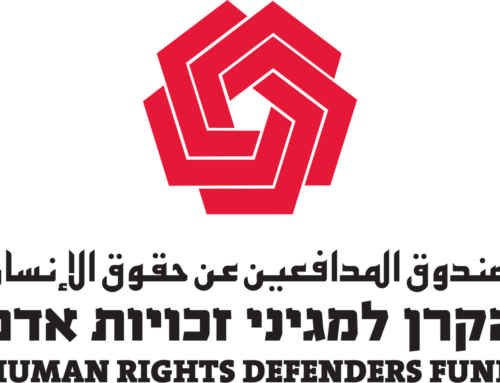Israeli academic mizrakhan (orientalist) Yehoshafat Harkabi was a former head of military intelligence in the IDF until he was fired in 1962 for his role in a mobilization exercise that went bad. He was most well known for his book, Arab Attitudes Towards Israel, in which he systematically collected and analysed statements by Arab leaders and regimes about “the Zionist entity.” He then wrote a follow-up book examining Palestinian politics and attitudes towards Israel. This book was published with the aid of the government, and the Israeli Information Office distributed free copies. But probably his third book, Arab Strategies and Israel’s Response, published originally in 1977, is his most insightful.
Harkabi analyzed the “stages” approach of the Palestinians (dating from 1974)–which declared that any territory extracted from Israel under diplomatic pressure would be used to liberate all of Palestine at a future date–along with the very different perspectives of Sadat and King Hussein of Jordan. He divided Arab leaders into two types: radicals and moderates. Radicals included the military dictators who headed the regimes in the Arab hereditary republics such as Egypt, Iraq, Libya, Syria and Yemen. He also included the Palestinian leadership in this category. The moderates consisted of the Arab monarchs in the Gulf, Morocco, and Jordan. And he placed Anwar Sadat of Egypt into this category. He explained that it was possible for Israel to make peace with the moderates but not with the radicals.
In the same book, he divided Israeli politicians into three camps–hawks, doves, and hawk-doves– depending on their view of dealing with Arab states and movements. He classified as hawks, politicians of the Likud and the National Religious Party, and some Labor leaders such as Golda Meir. They regarded the Arabs with suspicion, saw territorial expansion as the key to Israeli survival, and saw little or no hope for peace.
The doves consisted of politicians from Mapam, Mattityahu Peled’s Shelli party, and a few individuals in Labor. They found fault on both sides in the conflict and the possibility for peace if Israel was willing to compromise to accommodate Arab demands, especially those of the Palestinians.
The hawk-doves, who were the military politicians at the heart of the Labor Party—such as Moshe Dayan, Yigal Allon, and Yitzhak Rabin—combined these two sets of attitudes. They were naturally suspicious of Arabs, but were willing to believe in certain Arab leaders who had demonstrated their moderation and willingness to take risks for peace. I would also put Shimon Peres in this group both in his hawk phase in the 1960s and ’70s, and in his dove phase in the 1980s and ’90s. This was why Peres was ultimately able to work with his bitter rival Rabin in negotiating the Sinai II agreement with Egypt in 1975 and when making peace with the PLO in the Oslo process from 1993 to 1995.
Of all the possible combinations of Arab and Israeli leaders only that of an Arab moderate with an Israeli hawk-dove would result in peace. This prediction has proved true over the decades. It explains the success of the peace process with Egypt, which was negotiated by four hawk-doves: Yitzhak Rabin, Shimon Peres, Moshe Dayan, and Ezer Weizman. It also explains the successful negotiation of peace with Jordan in 1994 after Jordan had abandoned its responsibility for the West Bank. And it explains the failure of the Oslo peace process in the 1990s and the peace process with Syria in that same time period. Harkabi did not spend a lot of time on the doves as he knew that they could never rise to power in Israel—they would always be on the margins of Israeli politics with their peak in the 1992-2001 period, when Meretz was the junior partner in the coalition governments of Rabin and Barak.
Just as Sadat evolved as an Arab leader to become a moderate because of Egyptian national interest in peace, Mahmoud Abbas evolved as well. But Abbas suffers from the same weakness as King Hussein of Jordan. He is too weak politically to be able to make the necessary concessions that would result in a peace with Israel.
In Israel’s Security Men (McFarland 2015), I analyze four military politicians: Dayan, Rabin, Sharon and Barak. According to Harkabi’s typology, Dayan, Rabin, and Barak were all clearly hawk-doves. Sharon was a plain hawk until he evolved during his premiership into enough of a hawk-dove to unilaterally withdraw from Gaza, but not enough to coordinate that withdrawal with the Palestinian leadership.
Because of the failure of Labor to create an electable alternative to the Likud during Netanyahu’s time in power, the future of peace may well depend on the Israeli side on apostates from the Likud—and these will be hawk-doves. There have been four major apostates from anti-partitionist territorial maximalist Eretz Israeli parties in Israel’s history: Natan Yellin-Mor, Yigal Allon, Ezer Weizman, and Ariel Sharon. Three of these were former generals, war heroes, and hawk-doves.
The fourth, Yellin-Mor, was a former paramilitary politician who went directly from being a hawk to a dove with no hawk-dove stage in between. He was also the least successful of the four both in conventional political terms and in advancing the agenda for peace. Allon was able to move his political party, Ahdut ha’Avoda, from being anti partitionist to supporting a partition of the West Bank between Israel and Jordan. Weizman became a champion of the peace with Egypt and advocated genuine autonomy for the Palestinians. He was also a political failure; his biggest success was the election of Begin in 1977. Maybe this explains why there have been some eight biographies of Sharon and none of Yellin-Mor or Weizman, and only one of Allon.




Leave A Comment